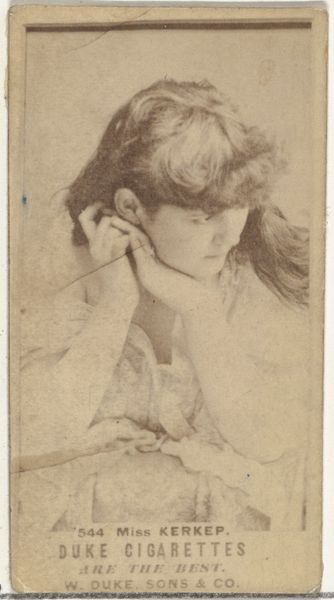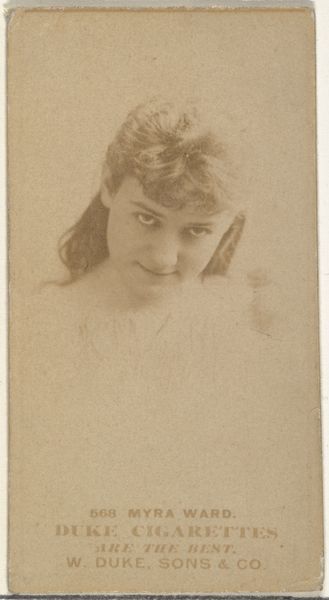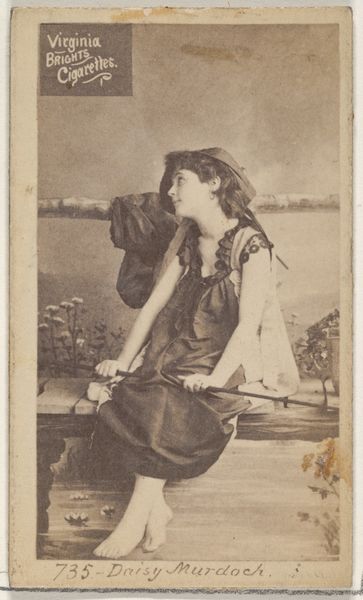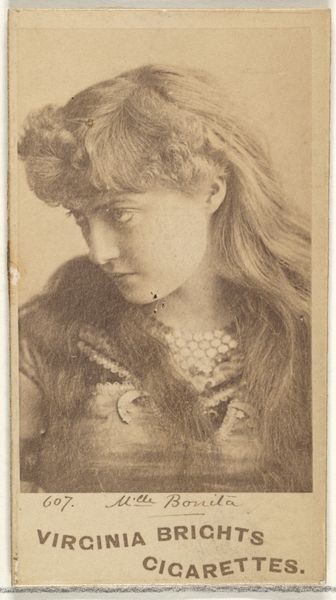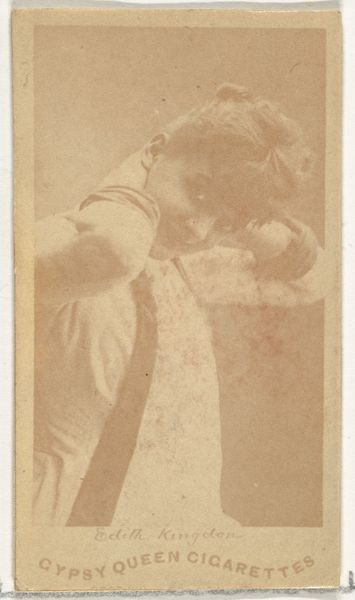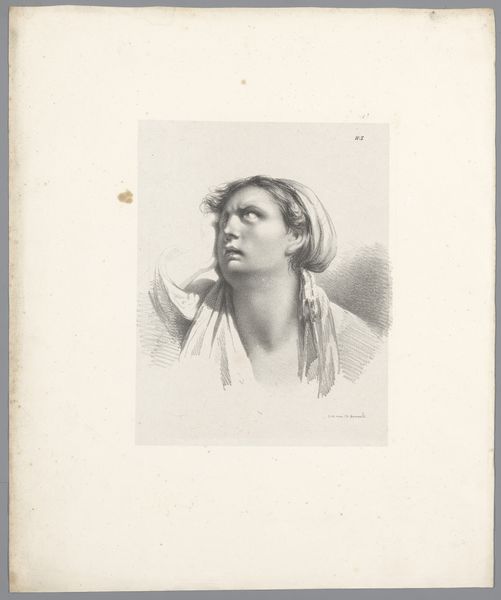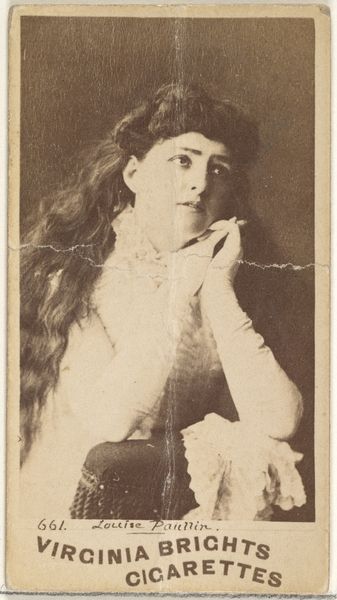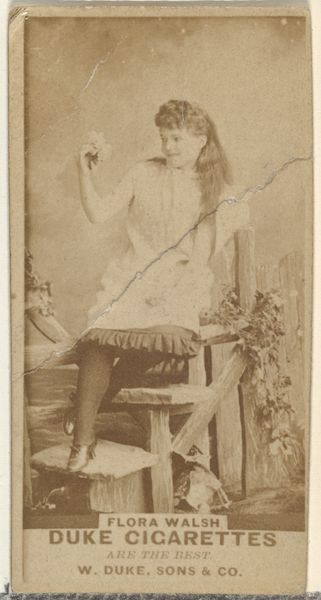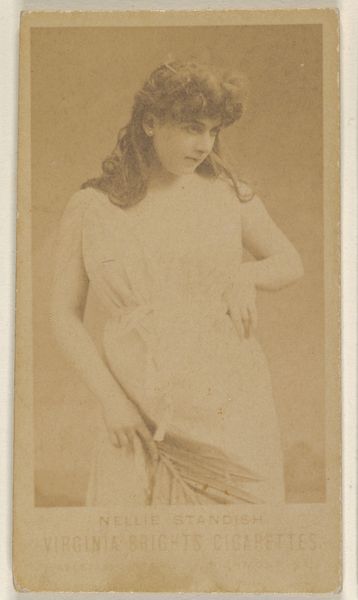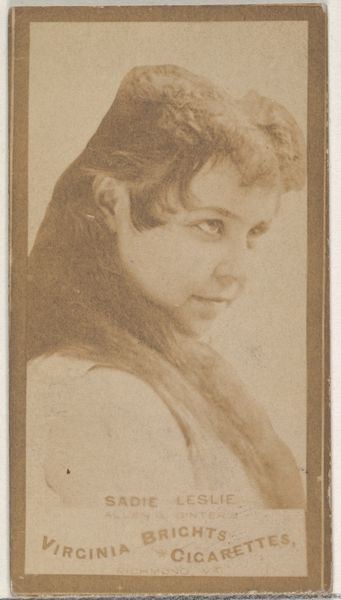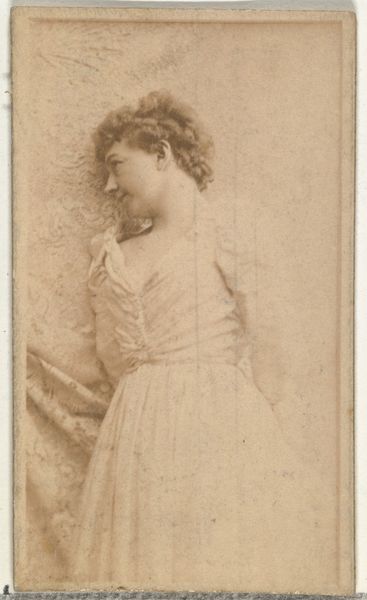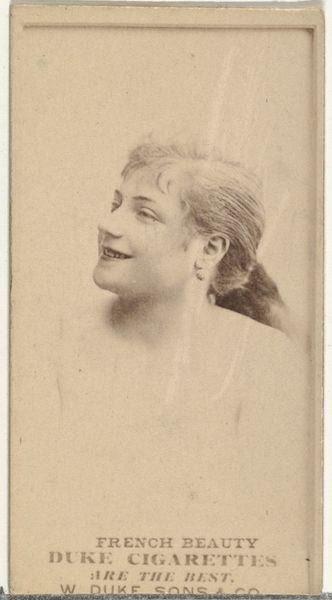
Card Number 314, M. Baimer, from the Actors and Actresses series (N145-5) issued by Duke Sons & Co. to promote Cameo Cigarettes 1880s
0:00
0:00
drawing, print, photography
#
portrait
#
drawing
#
16_19th-century
#
pictorialism
# print
#
photography
#
19th century
#
men
#
genre-painting
Dimensions: Sheet: 2 11/16 × 1 3/8 in. (6.8 × 3.5 cm)
Copyright: Public Domain
Curator: What strikes you first about this particular card from the "Actors and Actresses" series? Editor: Well, beyond the blatant advertisement for Cameo Cigarettes, there’s an undeniable intimacy here. She’s kissing her reflection, but it’s more than vanity; it reads almost like a radical act of self-love, or a yearning. What's its place historically? Curator: This is "Card Number 314, M. Baimer," part of a set produced by W. Duke, Sons & Co. in the 1880s to promote their Cameo Cigarettes. These cards, trading cards essentially, were inserted into cigarette packs as a marketing tactic. They reflect the burgeoning culture of celebrity, using popular performers to sell products. Editor: Celebrity and commerce intertwined – unsurprising. And look, the staged presentation normalizes, even glamorizes, the act of female vanity for public consumption, pushing capitalist ideals through female desire. I imagine most of its audience was male. But tell me, these "actors and actresses" were real people? What was their significance at the time? Curator: Indeed, M. Baimer, along with the others featured, were likely stage performers, though information about them can be difficult to verify now. The significance lies in the accessibility these cards provided. They offered a glimpse into the lives of public figures, helping create a connection between the consumer, the celebrity, and the product. Consider this was an era lacking the constant media access we have today. Editor: The very act of collecting and trading these cards creates a sense of shared experience and participation in a broader cultural phenomenon. Still, one can't ignore how these images participated in objectifying and commodifying the subjects—especially the women. And the normalization of smoking habits to future consumers is an aspect to think about, particularly now with a contemporary public health awareness. Curator: Certainly. While the cards seem harmless on the surface, they're dense with information about societal values, the growth of consumer culture, and the public's relationship with celebrity. Editor: Yes, they're historical records embedded in commerce and ripe with implications regarding gender and consumerism that still resonate today.
Comments
No comments
Be the first to comment and join the conversation on the ultimate creative platform.
